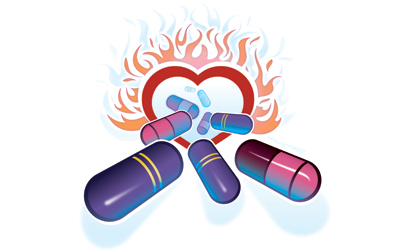Twenty years ago, adult-onset food allergies were almost unheard of. Today, they’re surging: Some 15 million Americans of all ages now suffer from food allergies, reports the Institute for Functional Medicine.
What’s behind this? The culprit may be common drugs that block stomach acid, according to several recent studies.
These acid blockers include proton pump inhibitors (PPIs) like Prevacid and Prilosec, as well as histamine H2-receptor antagonists (H2 blockers) like Zantac and Tagamet, which are widely used to treat GERD (gastroesophageal reflux disease) and other digestive conditions.
Acid blockers inhibit the digestion of protein in the stomach, and these undigested protein fragments may trigger an immune response or generate allergic responses.
If you’re experiencing food allergies or sensitivities and have taken acid-blocking drugs in the past, talk to your doctor about the possible connection; taking natural aids like digestive enzymes and probiotics can promote better digestion and a healthier gut microbiome. If you’re experiencing heartburn or other digestive discomfort, trying an elimination diet may help you pinpoint problem foods. (For a detox protocol, visit “The Institute for Functional Medicine’s Elimination Diet Comprehensive Guide and Food Plan“.)
Food Allergies by the Numbers
50%: The percentage increase in kids with food allergies between 1997 and 2011, according to a 2013 Centers for Disease Control and Prevention report. Children with food allergies are two to four times more likely to have related conditions, such as asthma and other allergies, compared with children who do not have food allergies.
8: The number of foods that account for 90 percent of all allergic reactions: peanuts, milk, shellfish, eggs, soy, wheat, fish, and tree nuts (including walnuts, almonds, cashews, and pecans).
8%: The percentage of U.S. children under 18 who have food allergies — about one in 13 kids. An estimated 4 percent of adults have similar allergies. While prepubescent boys are more likely to suffer from food allergies than girls of the same age, these conditions are more common among adult women than men.




This Post Has 0 Comments